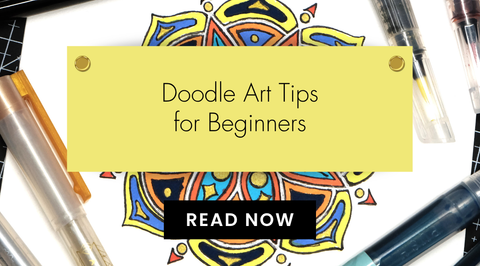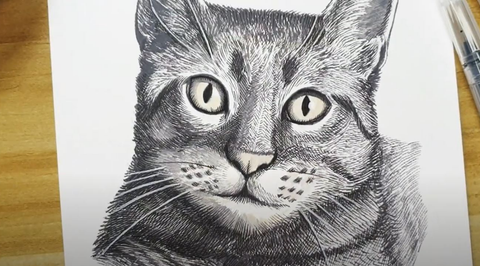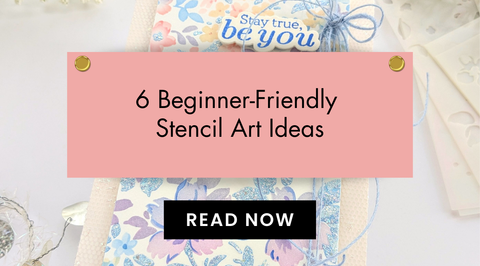What are the mental health benefits of creating art?
Last Updated: September 25, 2025
“Art washes from the soul the dust of everyday life.” – Pablo Picasso
In today's fast-paced world, stress and anxiety seem to be unavoidable. From the pressures of work to the demands of personal life, it's easy to feel overwhelmed. However, there is a simple and enjoyable way to combat these feelings: creating art.

Whether it's painting, drawing, knitting, sculpting, or any other form of artistic expression, engaging in the creative process can have a profound impact on mental well-being. In this blog post, we'll explore the mental health benefits of art and how it can serve as a form of therapy for the mind and soul.

Art Therapy: A Creative Approach to Mental Health
Art therapy is a form of psychotherapy that utilizes the creative process of making art to improve and enhance physical, mental, and emotional well-being. It provides individuals with an opportunity to explore their thoughts and feelings in a safe and supportive environment. Through creating art, individuals can gain insight into their emotions, develop coping skills, and improve self-esteem.

Creating art can be incredibly therapeutic, allowing individuals to express themselves in ways that words alone cannot. Whether it's through painting, drawing, or sculpting, art provides a means of communication that is both personal and powerful. This form of self-expression can be particularly beneficial for those who may have difficulty expressing themselves verbally, such as individuals struggling with anxiety or depression.

Creativity and Mental Health: A Match Made in Heaven
Engaging in creative activities has been shown to have a positive impact on mental health. The process of creating art can be meditative and calming, allowing individuals to focus their attention on the present moment. This mindfulness practice can help reduce stress and anxiety, promoting a sense of relaxation and overall well-being.
Furthermore, the act of creating art can also improve mood and enhance self-esteem. When individuals engage in artistic activities, they have the opportunity to experience a sense of accomplishment and pride in their work. This can be particularly empowering for those who may struggle with feelings of low self-worth or inadequacy.

Benefits of Creating Art: More Than Just a Pretty Picture
The mental health benefits of creating art extend beyond just reducing stress and improving mood. Engaging in artistic activities can also provide a sense of purpose and meaning in life. Here are some benefits you can get from creating art:
- Self-Expression and Identity
Art allows individuals to express their thoughts, emotions, and experiences that they may find difficult to articulate verbally. A person recovering from trauma may create a series of paintings that depict their journey, helping them process and communicate their feelings.

- Mindfulness and Presence
Creating art encourages individuals to focus on the present moment, promoting mindfulness and reducing anxiety. Practicing art in a quiet space can serve as a form of meditation, where the act of painting or drawing becomes a calming ritual.

- Boosting Self-Esteem
Completing an art project can instill a sense of accomplishment and pride, enhancing self-worth. A child who struggles academically may find confidence in their artistic abilities, leading to improved self-esteem in other areas of life.
- Cognitive Development
Engaging in artistic activities can stimulate cognitive functions such as problem-solving, critical thinking, and creativity. Art challenges individuals to think outside the box, encouraging innovative solutions in both art and daily life.

- Therapeutic Benefits
Art therapy is a recognized form of treatment that helps individuals explore emotions, reduce anxiety, and improve mental health. Group art therapy sessions can provide a safe space for individuals to share their experiences while creating art together.

- Social Connection and Community
Creating art can foster social connections, whether through classes, workshops, or online communities, allowing individuals to bond over shared interests. Local art clubs often host exhibitions where members can showcase their work, creating a sense of belonging and support.

- Coping Mechanism
Art can be a healthy outlet for coping with difficult emotions or life changes, providing a distraction and a way to channel feelings constructively. Keeping an art journal can help individuals document their thoughts and feelings during challenging times.

- Cultural Expression and Heritage
Creating art can help individuals connect with their cultural roots and express their identity, promoting a sense of pride and belonging. Participating in community mural projects that celebrate local history and culture can strengthen community ties.

- Intergenerational Connection
Artistic activities can bridge generational gaps, allowing families to bond over creative projects. Organizing family art days where grandparents and grandchildren collaborate on art projects can create lasting memories and strengthen relationships.

- Enhancing Emotional Intelligence
Engaging in art can help individuals better understand and manage their emotions, leading to improved emotional intelligence. Through art, individuals can explore complex feelings, such as grief or joy, and learn to articulate these emotions more effectively.

Enjoy the Mental Health Benefits of Creating Art Today!
The mental health benefits of creating art are undeniable. From reducing stress and improving mood to enhancing self-esteem and providing a sense of accomplishment, engaging in artistic activities can have a profound impact on mental well-being. Go ahead and pick up a paintbrush, grab a pencil, or some yarn and knitting needles! Get creative and experience the therapeutic power of art for yourself. Your mind and soul will thank you for it! Stop by The Creative Corner for more art tips, ideas, and inspiration.









Aww thank you so much for those heartwarming words, Liz! We appreciate it. Glad you enjoyed this article. The work you’re doing is commendable! :)
I love this article! I work in a facility that deals with traumatized youth and teens. I have seen some of their artwork and it is mind-blowing! As these individuals travel through their re-processing journey, many of them use art to cope with the stress they feel. Thanks for posting this. Pablo is so right!